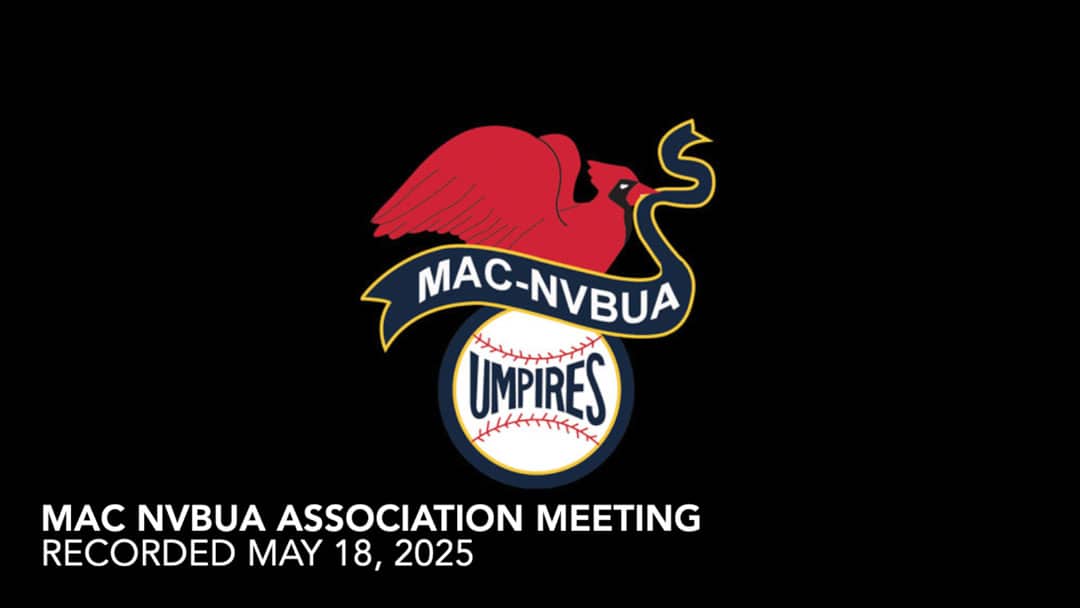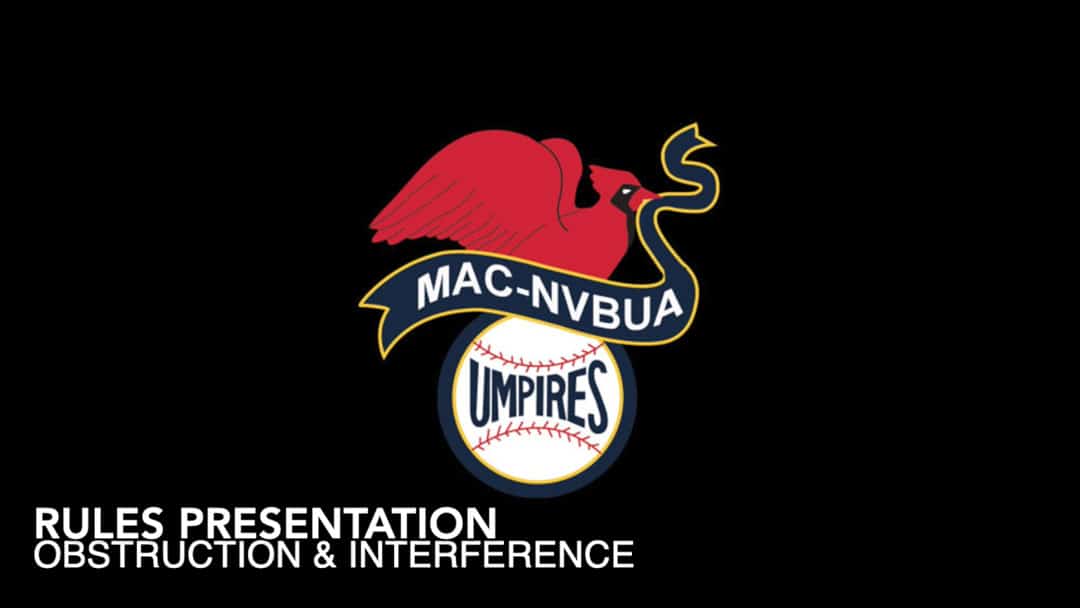Obstruction
This month, the rules committee was asked to write about obstruction.
There’s more than one type of obstruction in baseball that we need to be aware of during a play.
Obstruction can either be a physical act or a verbal distraction. For instance, team personnel, such as a player or coach, can verbally obstruct (which can be a bit complex).
Obstruction can be most simply defined as: an act by a fielder, who is not in possession of the ball that impedes the baserunner’s progress.
There are two types of obstruction, one “with a play being made on a runner” and one “without a play”. In NHFS, the minimum base award is one base (both types) and for the purposes of this article, we’re only going to talk about high school rules.
When a play is being made on the obstructed baserunner, for example a rundown or play at the plate, the ball is NOT ruled dead at the time of the obstruction(delayed dead ball) and the umpire will let the play come to its natural conclusion (there is one exception to this coming up soon) and place runners appropriately. In a rundown, for instance, between 1st and 2nd, you’d typically award the obstructed runner 2nd base, satisfying the requirement of the one base award.
Mechanically, when you see obstruction, point at it and verbalize loudly, “That’s Obstruction”. Once play stops, you want to point at the defensive player that “obstructed” the runner and re-verbalize, “That’s Obstruction” (not quite as aggressively) and then point to the obstructed runner and point to the base you’re awarding saying, “You, WHATEVER BASE YOU ARE GOING TO BE AT NOW!”
Obstruction without a play is different because the ball is not present. The easiest example is a runner rounding second base with the intention of heading to third but alters his path because the 2nd baseman didn’t get out of his way. Mechanically, you would do the same thing as previously mentioned, however from a judgement standpoint, you would be able to award whatever base you felt the runner would have obtained had the obstruction not occurred (1 base minimum award.
Remember, in NHFS, the runner is AUTOMATICALLY awarded at least 1 base from the point where the obstruction happened. So, in the example, if the runner had not yet passed 2nd base at the time of the obstruction and was then thrown out third, there is the chance that he is actually out at third if you judge that “had the obstruction not occurred” he would have been out anyway! (That may sound like a word salad, but in the moment it may save you and a potential ejection!)
Catcher’s obstruction is when the a catcher interferes with the batter, he’s actually hindering him. To keep it simple, the batter would typically be awarded 1st base. (Additional scenarios were intentionally omitted) Just speculation, but it’s probably called interference because he’s a batter, not a runner.
Previously mentioned, there’s one case in NHFS where obstruction is immediately a dead ball. That instance is when there’s malicious contact. In all situations, NHFS prioritizes safety, so obstruction that is malicious in nature will always be an immediate dead ball. (Intentionally not addressing associated ejections)
One thing to remember while awarding bases due to an obstruction, that award is for the obstructed runner only. IF another runner is forced to advance as a result of the obstruction award, then you should advance that runner as well. IF, for instance, the obstructed runner scores or advances to the base you judged they would have had the obstruction not occurred (obstruction without a play), there is no additional enforced penalty.
Table of Contents
Issue #13 – August 18, 2025
Letters to the editors welcome at [email protected]

MACNV Association Meeting: May 18, 2025
Replay of the MAC-NV Association Meeting via Zoom on Sunday, May 18, 2025

Rules Presentation: Pitching
Rules Presentation on NFHS Pitching Rules pre-recorded by Greg McEvoy in May, 2025.

Rules Presentation: Obstruction & Interference
Replay of the Rules Presentation on Obstruction & Interference by Greg McEvoy held via Zoom on Sunday, April 27, 2025.